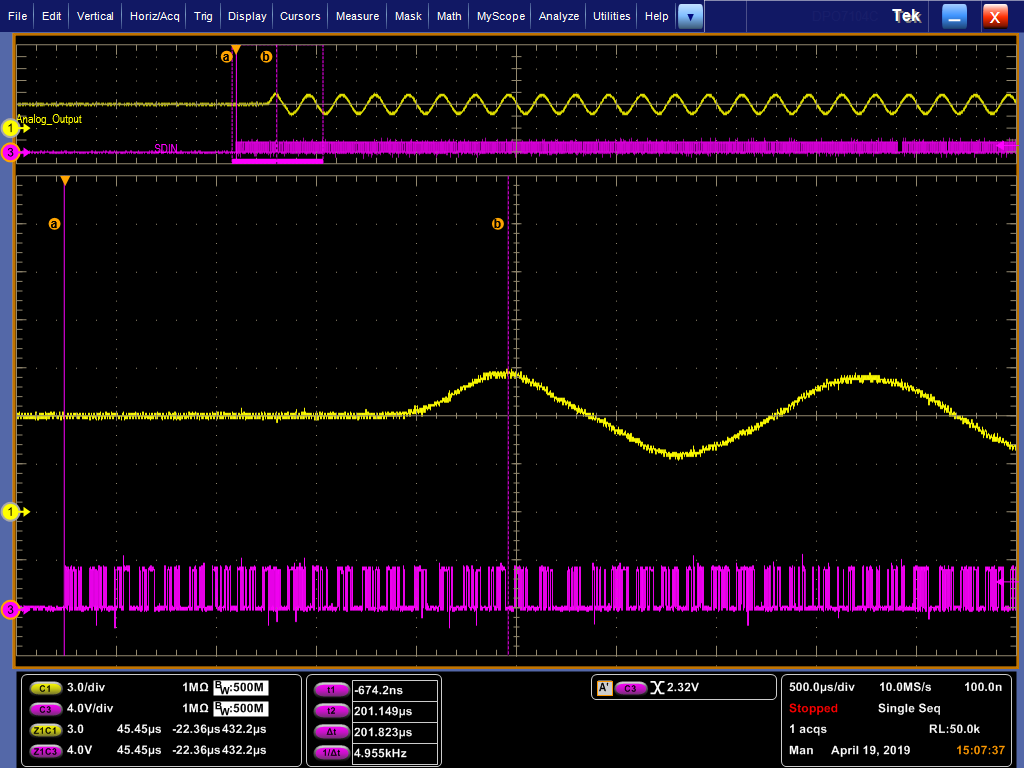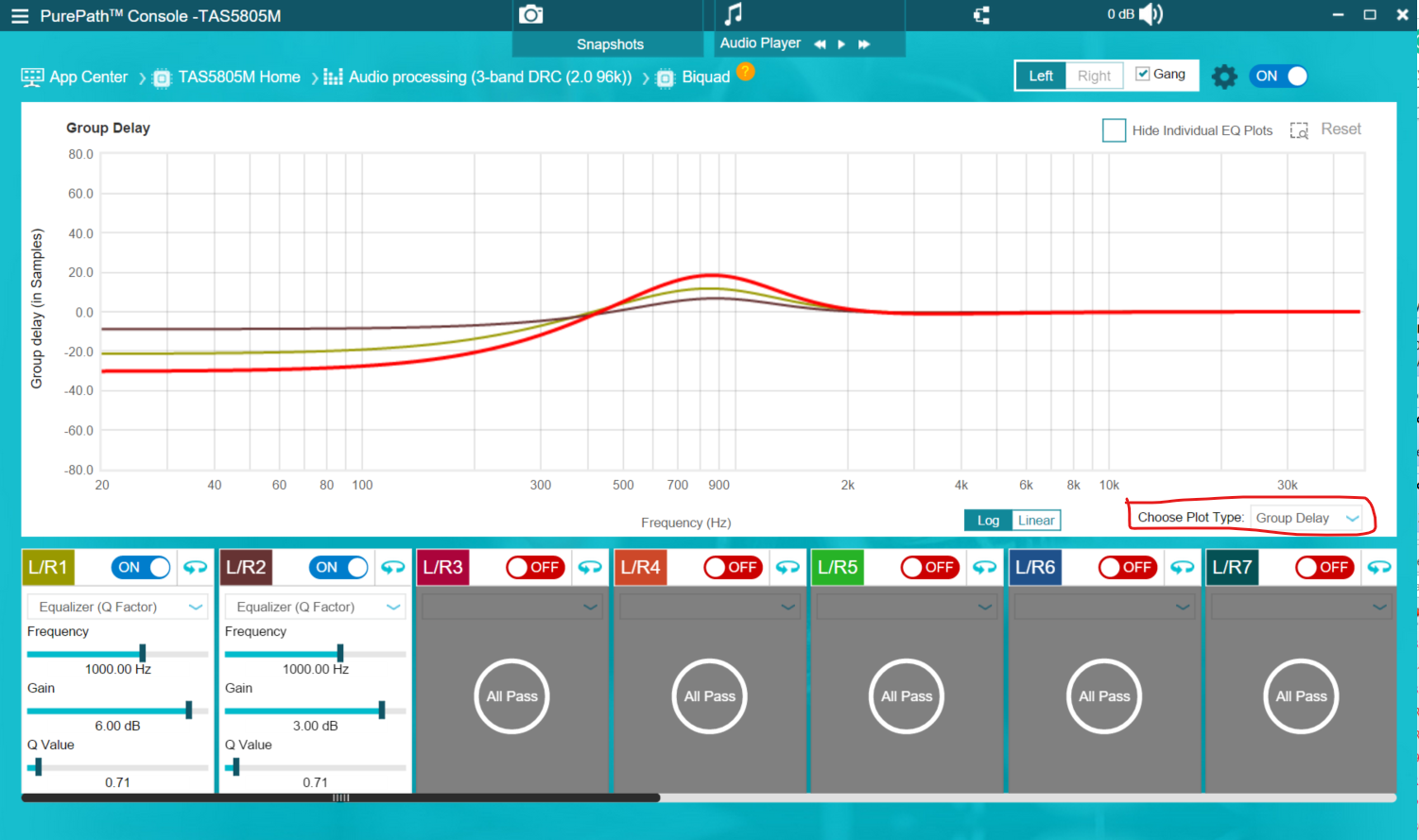Other Parts Discussed in Thread: TAS5805,
Hello
Here is additional question from my customer.
1. Latency time is 126us when input sample rate is 96KHz. it time was mentioned at https://e2e.ti.com/support/audio/f/6/t/822365
It time is between pre SRC and post Crossber? if no, Please let me know start point and end point for this time.
2. Latency time is not constant. it is depend on DSP processing. What parameter is dominant time of processing for latency perspective when FS=96KHz and FS=48KHz? Customer is evaluating by using pure-path console. Customer is expecting to get answer by pure path console parameters.
Regards,






